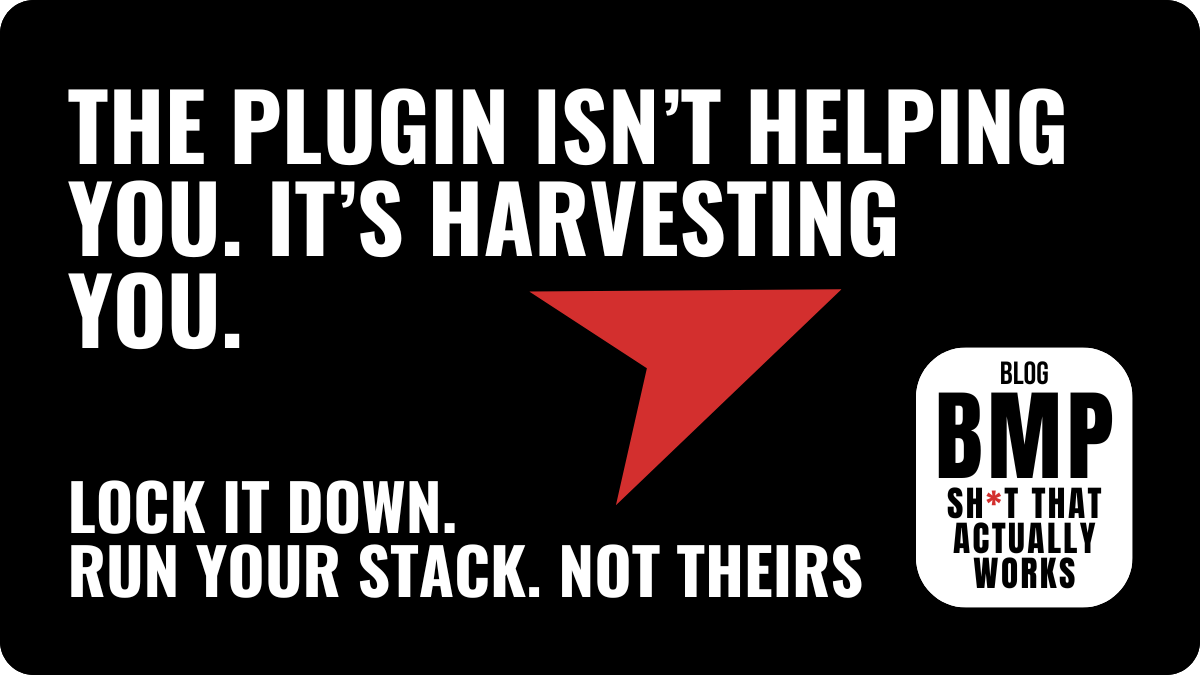The Real Reason Your Recurring Revenue Isn’t Recurring
**Your Subscriptions Aren’t Printing. Because Your Offer Sucks.**

I've noticed a recurring issue in many of the places I've worked: they lack a solid customer list. Surprisingly, when you ask for the definition of a customer, the answer is often vague—“it depends.” But to me, it’s straightforward: if someone is paying, they’re a customer. If they’re not, they’re not. Simple.
Churn Tracking: Without a clear list, how can you measure churn? You can’t. Let’s say you notice a dip in your monthly revenue—without an accurate customer list, you’re left guessing. Was it a few big clients who left, or many smaller ones? Understanding churn isn’t just about knowing who left, but why they left. Maybe they found a better deal elsewhere, or perhaps your product didn’t meet their needs. Pinpointing these reasons allows you to take meaningful action to improve retention, tailor your services, and ultimately lower your churn rate.
Outbound Marketing: Whether you're sending emails or using tools like Connect and Sell, a messy lists can make you look disorganized. Imagine sending personalized offers or newsletters to your customers—only to realize later that half of the emails bounced back because they were outdated. Worse, you could end up with multiple emails and calls to the same person, from BDR's and AE's all at the same time, which can be annoying and unprofessional. It’s like crossing the streams in Ghostbusters—it creates chaos and confusion both inside and outside the company. A clean, up-to-date lists ensures that your outbound marketing efforts are targeted, effective, and reflect well on your brand.
Communication: If you don’t know who your customers are, you can’t ask for reviews, automate surveys, or get valuable feedback. It leaves you disconnected from your customer base. Feedback is a goldmine for any business—it can guide product development, improve customer service, and boost overall satisfaction. But if you’re not sure who your customers are, you miss out on these valuable insights. Having an accurate customer list allows you to engage with your customers meaningfully. You can ask the right people for testimonials, send out surveys to gather insights, and even create customer success stories that highlight your product’s value. This kind of engagement builds a stronger, more loyal customer base.
Picture this: running a business without an accurate customer list is like sailing a ship without a compass—you're bound to get lost. An up-to-date customer list isn’t just a fancy add-on; it’s the backbone of your entire strategy. It's what helps you keep tabs on churn, nail your marketing campaigns, and have meaningful conversations with your customers. Think of it as more than just a spreadsheet of names and emails; it's a dynamic, living archive of customer data that fuels every part of your business.
Discover the opportunities you could be overlooking with our intuitive calculator.
Estimate yours: 3 Simple Questions →

This is a common and frustrating problem, particularly in SaaS companies. Too often, founders and leaders treat customer counts as a vanity metric, without realizing how important it is to actually know who those customers are. Numbers can look good on a pitch deck, but they don’t tell the full story. You could have 10,000 users, but if half of them are inactive or disengaged, what’s the real value?
Consider a scenario where your pitch deck proudly boasts 10,000 users, impressing potential investors and stakeholders. However, beneath that impressive number lies a reality check: if half of those users are inactive or disengaged, your true customer base is significantly smaller and less valuable. Inactive users don't contribute to revenue, don't provide meaningful feedback, and can't be relied upon for referrals or testimonials. They represent missed opportunities and hidden problems.
Understanding your customer base in depth allows you to segment effectively, personalize interactions, and ultimately build stronger, more profitable relationships. Segmentation is key; it lets you identify which customers are high-value, which ones need nurturing, and which ones might be at risk of churning. By personalizing your interactions, you can send relevant content, make tailored offers, and engage customers in ways that resonate with their specific needs and preferences. This targeted approach not only enhances customer satisfaction but also drives loyalty and increases lifetime value.
In essence, a superficial focus on customer counts can lead to a false sense of security and missed opportunities for genuine growth. By diving deeper into who your customers truly are, you can transform raw numbers into actionable insights, ensuring that your business strategies are grounded in reality and poised for long-term success.
Fill out the form and get notified when new content drops!
Let us dive into the data jungle for you, pinpoint your real customers, and transform those numbers into meaningful connections. And hey, while you’re at it, hit that subscribe button on our blog for a treasure trove of tips and tricks on mastering your customer data. Our mission? To turn that often-neglected customer list into a powerhouse tool that sharpens your business goals, turbocharges your marketing, and deepens your customer bonds. Don’t let your customer data be an afterthought. Make it a priority and watch your business not just survive, but thrive.

**Your Subscriptions Aren’t Printing. Because Your Offer Sucks.**

Why HubSpot Is a Subscription Weapon for HVAC Businesses You don’t need more leads. You need predictable revenue. Let’s build it.

The Plugin Trap: How “Helpful” Tools Are Quietly Screwing Your Business Let’s cut the crap—most plugins aren’t just “enhancing” your website.They’re...